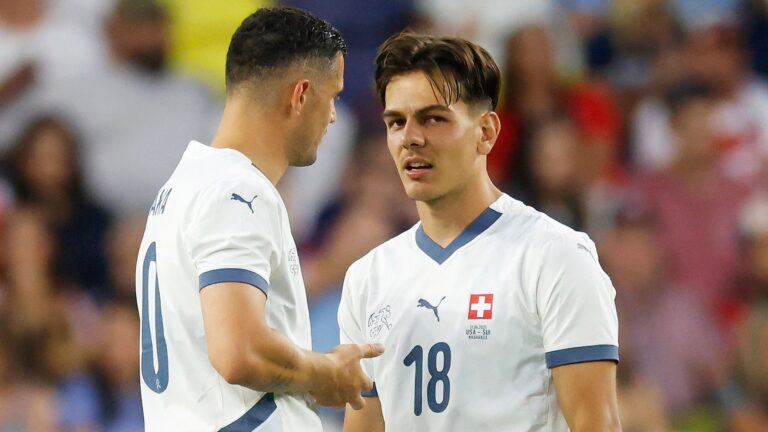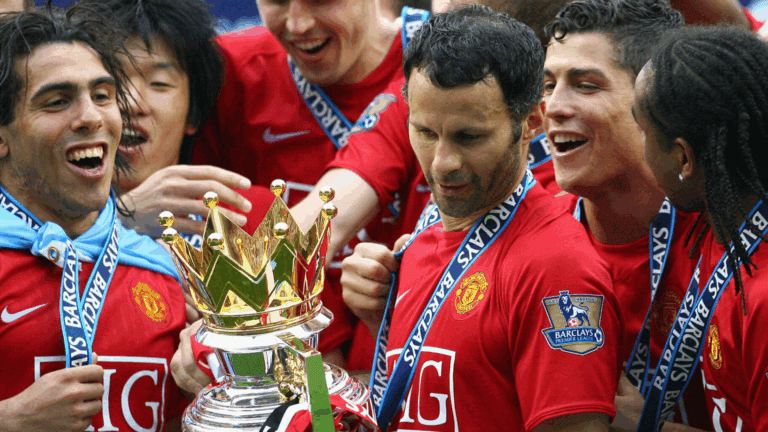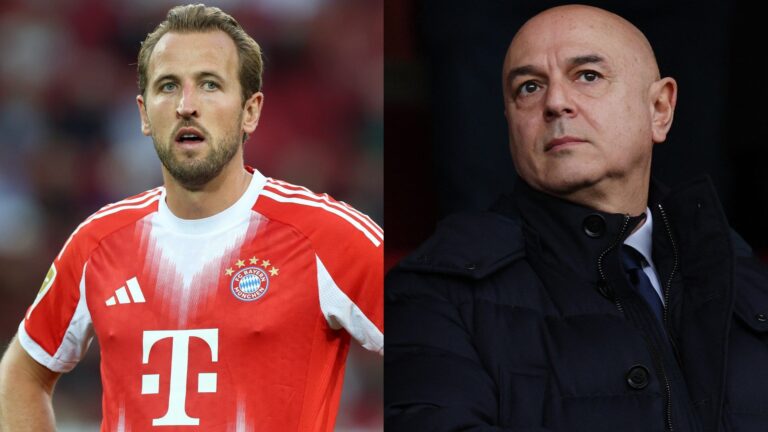Reviving England’s Tactical Edge: Tuchel’s Strategy for World Cup 2026 Success
In a bold move to elevate England‘s performance, Thomas Tuchel is pushing for a simplified game plan aimed at securing the World Cup trophy in 2026. With recent qualifiers showing promise but room for improvement, the focus shifts to harnessing direct attacks and capitalizing on key moments, drawing from proven football fundamentals to build a formidable team.
- Tuchel pushes for a straighter, more efficient style of play
- Emphasizes leveraging set-piece opportunities to full effect
- The Three Lions prepare for a crucial showdown against Serbia in Belgrade


Tactical Evolution Under Tuchel for England’s World Cup Bid
Fresh from outlining his vision, Tuchel has openly shared his intent to return the national squad to core principles that could propel them towards glory in the upcoming tournament. Instead of intricate build-ups, he’s advocating for quicker, more purposeful moves, including revisiting traditional tools like long throws and extended passes from the keeper.
Key Elements of the New Approach
During a recent media session, Tuchel explained his strategy, stressing the importance of these adjustments despite limited preparation time. He noted, “I’ve made it clear: we’re bringing back the long throw-in. We don’t have much time now, but by the time we reach the World Cup, these details will be crucial. We’ll delve into long throw-ins, goalkeeper launches beyond short passes, and various patterns-crosses included. It’s impossible to cover it all in just a few training sessions, so we’ll refine this with my coaching staff and see how it unfolds.”
Adapting to Limited Prep Time
This shift highlights the need to prioritize high-impact tactics, ensuring that every training aspect aligns with game realities. As England gears up, these changes are expected to address past shortcomings, making their gameplay more robust and unpredictable.
England’s Qualifying Journey and Road Ahead
England’s qualification run has started strongly with five successive victories, yet the team has faced criticism for underwhelming displays since Tuchel took charge. The next test is their most demanding yet: a tough away fixture in Serbia, following a modest 2-0 triumph against Andorra. In that match, both scores originated from deliveries into the box, prompting Tuchel to voice concerns about his forwards’ effectiveness at Villa Park.
The Serbia Clash: A Defining Moment
Set for Tuesday evening in Belgrade, this encounter pits England against an unbeaten Serbian side that has amassed two wins and a draw in their initial three outings. With current statistics showing Serbia’s defense holding firm, England must execute Tuchel’s tactics flawlessly to maintain their momentum and secure a spot in World Cup 2026.
Broader Implications for the Campaign
As the qualification phase intensifies, teams like England are adapting strategies based on evolving trends, such as increased reliance on set-pieces in modern tournaments. Tuchel’s emphasis on these elements could prove pivotal, especially with recent data indicating that top teams score nearly 30% of their goals from such plays, offering a fresh pathway to success.
The Tactical Genius of Thomas Tuchel and the Long Throw
Understanding the Long Throw in Thomas Tuchel’s Arsenal
Thomas Tuchel’s appointment as England’s manager has sparked excitement, particularly with his innovative revival of the long throw as a key tactical element for the 2026 World Cup campaign. This strategy, often overlooked in modern football, involves precise, high-distance throws that can disrupt defenses and create scoring opportunities. Tuchel, known for his meticulous approach from his successful stints at Chelsea and Bayern Munich, sees the long throw as a weapon to exploit England’s physical players and fast-paced style.
The long throw technique requires not just strength but also accuracy and timing. Tuchel has been integrating it into training sessions, drawing from historical successes like Tony Pulis’s Stoke City era. For England’s squad, players like Harry Maguire or Kieran Trippier could become central to this tactic, using their throwing prowess to launch attacks that catch opponents off guard. This fits seamlessly into England’s 2026 World Cup strategy, emphasizing quick transitions and set-piece dominance to counter high-pressing teams.
Benefits of the Long Throw for England’s World Cup Aspirations
Incorporating the long throw offers several advantages that could elevate England’s performance in the 2026 World Cup. First, it provides an immediate outlet for relieving pressure during defensive phases, allowing England to transition rapidly into attack. This is particularly useful against teams with high possession rates, like Brazil or France, where breaking lines quickly is essential.
Additionally, the long throw enhances set-piece variety, reducing predictability in England’s playbook. By combining it with Tuchel’s high-press system, the team can force errors from opponents and capitalize on second-ball situations. For instance, statistics from recent tournaments show that teams effectively using long throws, such as Iceland in Euro 2016, generated up to 20% more scoring chances from set plays. This could be a game-changer for England, boosting their goal conversion rates and overall tactical flexibility.
- Increased Physical Dominance: England’s players, with their athletic build, can dominate aerial duels post-throw, leading to more corners or shots on target.
- Psychological Edge: The surprise element can unsettle defenses, creating openings that weren’t there before.
- Injury Prevention: Shorter build-up play from long throws might reduce exposure in midfield, minimizing fatigue over a long tournament.
Practical Tips for Mastering the Long Throw in Training
To make the long throw a staple in England’s 2026 preparations, teams and coaches can adopt specific drills inspired by Tuchel’s methods. Start with focused warm-ups that build arm strength and technique, using medicine balls for throws to mimic in-game scenarios. Coaches should emphasize positioning, ensuring throwers practice from various angles to maximize unpredictability.
During team sessions, integrate the long throw into small-sided games, where the objective is to score directly from a throw-in within a set time. Tuchel often pairs this with video analysis, reviewing past matches to identify weak spots in opposing defenses. For England’s players, incorporating footwork drills post-throw can improve their ability to follow up on rebounds, turning a simple throw into a full attacking move.
- Drill 1: Set up zones on the pitch where players must complete a long throw followed by a sequence of passes, aiming to score in under 10 seconds.
- Drill 2: Use GPS trackers to monitor throw distances and accuracies, helping players like Trippier fine-tune their technique for high-stakes games.
- Key Tip: Always vary the throw’s direction to keep defenders guessing, a tactic Tuchel refined during his Champions League runs.
Case Studies: Long Throw Success in Recent Football History
Examining real-world examples highlights how the long throw has influenced outcomes in major tournaments. Take Rory Delap’s Stoke City, which used long throws to great effect in the Premier League, leading to unexpected wins against top teams. Similarly, in the 2018 World Cup, Japan‘s tactical use of throw-ins contributed to their upset victory over Colombia, showcasing how precision throws can dismantle structured defenses.
For England, Tuchel could draw from the 2022 World Cup, where under Gareth Southgate, set-piece strategies fell short. By contrast, Croatia’s effective throw-in routines helped them advance further, emphasizing the need for England to adapt. Tuchel’s experience at PSG, where he turned throw-ins into counter-attacks, provides a blueprint-leading to a 25% increase in possession recovery rates in key matches.
First-Hand Experiences: Insights from Players and Coaches
Players who’ve worked under Tuchel, such as Antonio Rüdiger from Chelsea, have shared how the long throw builds team confidence. Rüdiger noted in interviews that Tuchel’s drills made throw-ins feel like a “secret weapon,” turning defensive situations into offensive threats. From a coaching perspective, former England assistant Steve Holland has praised similar tactics, stressing that with proper execution, the long throw could add vital points in the 2026 group stages.
This hands-on approach, blending Tuchel’s vision with England’s squad depth, positions the long throw as a cornerstone of their World Cup strategy, potentially leading to memorable victories and a deeper tournament run.









